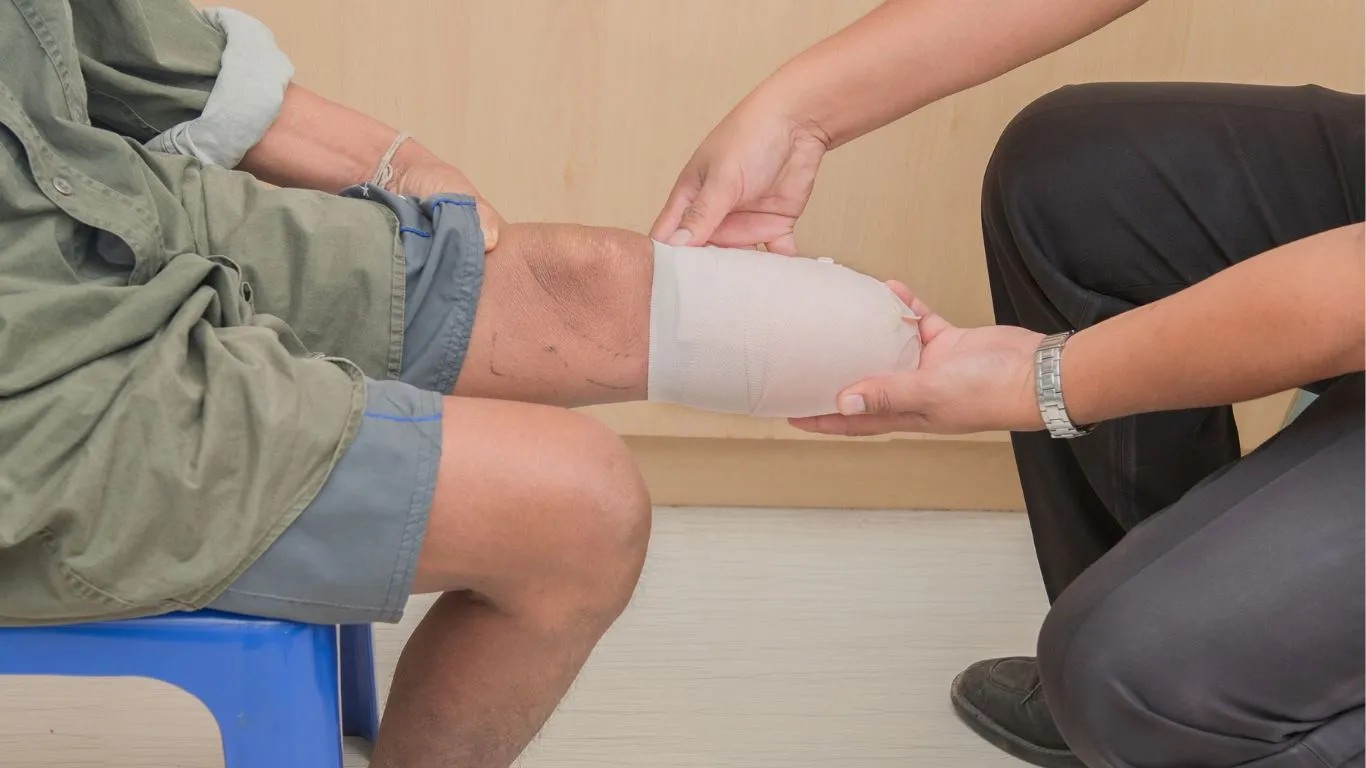
28 أغسطس What Happens After Foot Amputation?
Foot amputation is performed when there is an infection, health issue, or tissue damage affecting the foot that makes repair or treatment impossible and poses a risk to the person’s life, such as severe diabetic foot conditions or prolonged compromised blood circulation to the foot. After the procedure, the individual requires a long period to fully recover.
What Happens After Foot Amputation?
Here are the different stages of recovery after foot amputation, as explained by Dr. Amir Malkawi, a vascular surgery consultant:
Hospital Recovery
The hospital recovery period after foot amputation involves the following steps:
- Oxygen is continued via a face mask, and a urinary catheter (Foley catheter) is typically placed for several days post-operation.
- At the end of the foot amputation surgery, a dressing is applied at the amputation site on the leg.
- The foot dressing needs to remain in place for at least 3 days.
- During this time, the dressing is regularly changed by the nursing staff.
- The patient is also taught how to change the dressing at home as they may need to do so after discharge from the hospital.
- Physical therapy or physiotherapy sessions may begin immediately after foot amputation while the patient is still in the hospital. These sessions typically focus on stretching exercises and other simple movements.
- Discharge from the hospital usually occurs within several days depending on the patient’s condition.
- Before discharge, the patient is often provided with important information, including:
- How to use a wheelchair or crutches.
- Encouragement to walk in the hospital room.
- Methods to strengthen the leg and arm muscles to compensate for the amputated foot and aid in mobility.
- Information about the allowable weight bearing on the unaffected side of the body.
- Information about available options for prosthetic limbs after complete healing from the amputation wound.
Read More: Surgical Bypass for Peripheral Artery Disease
Recovery at Home
After returning home from foot amputation surgery, the individual may need some time to get used to using a wheelchair or crutches. Even after recovery and the fitting of a prosthetic limb, it may take some time to adjust to it. It’s natural to feel sadness, anger, or depression, but if these symptoms persist for a long time, it’s important to seek appropriate psychological counseling to overcome this stage.
Here are some instructions for recovery at home after foot amputation:
- Adhere to the doctor’s instructions regarding changing the dressing and when it is permissible to shower.
- Adhere to prescribed medications.
- Wear compression garments or wraps recommended by the doctor; these will help reduce swelling in the foot.
- Maintain physical activity to aid in speeding up the healing process.
- Ensure compliance with the treatment plan recommended by the doctor to control blood sugar and blood pressure levels.
- Eat normally but focus on a healthy diet that promotes wound healing.
- Maintain cleanliness and dryness of the wound.
- Wash the wound area regularly with mild soap and water after removing the dressing and the area has healed.
- Work to reduce the chances of the other limb being amputated, which includes avoiding wearing inappropriate footwear, regular follow-up with the doctor, and adherence to treatment plans recommended by the doctor to control chronic conditions.
Rehabilitation
All cases of foot amputation require rehabilitation for the individual to adapt to the new body condition, whether a prosthetic limb is fitted or not. In some cases, the rehabilitation phase may begin before the surgical procedure as preparation for both the body and the individual. It’s essential to adhere to both physical and psychological rehabilitation sessions after foot amputation to achieve the best treatment outcomes and avoid unwanted setbacks.
Foot Amputation and Psychological Impact
Accepting the loss of a limb may not be easy initially, but the following tips can help reduce the psychological impact of this operation:
- Surround yourself with loved ones and stay connected with them.
- Seek assistance from close friends and family.
- Remind yourself that what happened is for your benefit and will protect you from more severe complications.
- Visit a psychologist if needed.
- Symptoms Requiring Immediate Medical Attention After Foot Amputation
There are several symptoms that, if present after foot amputation, require immediate medical attention:
- Skin warmth to touch.
- Pain persisting despite using pain relief medication.
- Abdominal pain or nausea preventing eating or drinking fluids.
- Sutures coming undone or a wound opening up.
- Signs of infection such as fever, pus from the wound, swelling, and redness in the area.
- Skin discoloration turning black around the amputation site.
- Increased size of the wound.
- Foul odor coming from the wound.
Frequently Asked Questions
How long is the recovery period after foot amputation?
The recovery period after foot amputation varies depending on the location of the amputation and the individual’s health condition, typically ranging between 4-8 weeks.
Will I need another amputation in the leg?
This depends on the reason for the amputation and adherence to prescribed treatments. If the cause of foot amputation is effectively managed, there should be no need for further amputations of other parts of the leg or the other foot in the future.
References:
[1] – https://www.medicalnewstoday.com/articles/324875
[2] – https://www.mountsinai.org/health-library/surgery/leg-or-foot-amputation
[3] – https://www.apcofamerica.com/foot-amputation-next/
[4] – https://medlineplus.gov/ency/patientinstructions/000013.htm
[5] –https://myhealth.alberta.ca/Health/aftercareinformation/pages/conditions.aspx?hwid=zu2075
